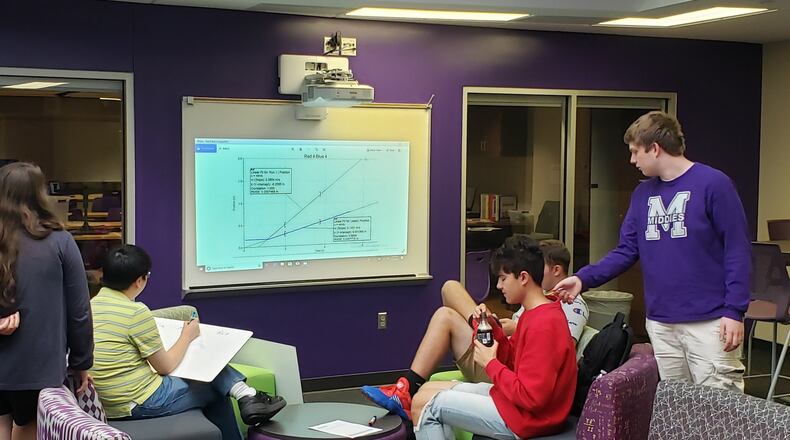Called “flex spaces” in the high school and “learning pods” in the middle school, the non-classroom areas give teachers an instructional option outside the traditional classroom setting.
Both the high school renovation and expansion and the new middle school were constructed as part of a $86 million building project that was the largest in the city schools’ history.
Students can pair off or work in larger groups, spreading out their project work or holding school work discussions in a setting more like that adult work world they are headed toward.
Joseph Stringer, advance placement physics teacher at Middletown High School, said the school’s flex spaces located throughout the school allow for “more hands-on learning.”
“For physics I need bigger spaces and I like to get the students out and doing things,” said Stringer, who has taught at the school for six years and has no fond memories of the old high school’s limited learning spaces.
“And it’s also more fun to get them out of the classrooms at time. I couldn’t do some of the practical experiments we do without the big space.”
Middletown senior Ishmael Ar-Razi said the flex space is often more enjoyable than learning in a classroom.
“I do prefer leaving the classroom and learning in a more open environment,” Ar-Razi said.
Junior Tim Landeck said the flex space is “way better than normal classrooms” for learning individually and through group projects.
“It’s something different and it’s better,” Landeck said.
Stephen Mosby, a spokesman for the city schools, said the modern learning spaces are part of the district’s overall strategic plan.
“Middletown Schools designed flex spaces for our students in congruence with our Strategic Plan for Instructional Excellence,” Mosby said. “The spaces were intentionally created to expand the creative boundaries outside of the classroom for students and teachers,” he said.
About the Author
